Vrooming through the L.A. Auto Show
This year’s L.A. Auto Show showed various new models from the world’s leading manufacturers.
A photo of the Subaru Stand in the West Hall of the L.A. Auto Show.
December 6, 2022
LOS ANGELES, CA — During the COVID-19 pandemic, the L.A. Auto Show had a one-year hiatus. 2021 marked the show’s official return, albeit with fewer automakers showcasing their models. Compared to the 2019 show (the last show before the pandemic), there were less manufacturers at this year’s event due to the repercussions of COVID-19. This is likely due to a global trend of hosting virtual events to save costs.
Located at the Los Angeles Convention Center, the L.A. Auto Show is organized into three halls: South, West, and Neil Petree. The South Hall is the largest of the three halls, and features: Chevrolet, Genesis, GMC (and their Hummer EV subsidiary), Honda, Hyundai, Kia, Lexus, Lincoln, Mazda, Nissan, Polestar, Toyota, Vinfast, Volkswagen, and Volvo. There was also a stand that featured Hyperion, a hydrogen fuel cell company. Winners of the Hispanic Motor Press Awards and North American Car, Truck, and Utility Vehicle of the Year Awards were displayed The smaller West Hall had models from Subaru, Ford, and the Stellantis group, while the Neil Petree hall is dedicated exclusively to Porsche.
The trend from last year’s show of indoor test rides continue this year. Generally, larger automakers offer test rides of their electric models. In the North Hall, Nissan offered rides in their new, electric Ariya crossover SUV. Likewise, Hyundai gave attendees opportunities to ride along in the company’s popular, retro-inspired Ioniq 5. Ford offered rides of their F-150 Lightning electric pickup truck and offroad simulations in the Bronco. Similarly to Ford, Jeep and Ram gave attendees exhilarating off-road experiences in their vehicles.
Here are five interesting vehicles from the L.A. Auto Show. At the end of each section, I will be sharing a personal opinion about my experiences with the cars.
Hyundai Ioniq 6
Based on the E-GMP platform, the new Hyundai Ioniq 6 is the second car to be released under the company’s new Ioniq sub-brand. Unlike the E-GMP-based Ioniq 5, the Ioniq 6 is a curvaceous, low-slung sedan. Hyundai dubs the new sedan as an electrified streamliner, referencing planes from the 1930s and 40s like the Douglas DC-3. However, there is some substance to the “electrified streamliner” name, because the Ioniq 6 is one of the most aerodynamic vehicles on the road with a drag coefficient of just 0.21. The car’s slippery shape should be good for about 340 miles of range for the single-motor model and 310 miles of range for the dual-motor model. Like other E-GMP-based cars, the Ioniq 6 is on an 800v charging architecture. Hyundai claims that a charge from 10 to 80 percent should take about 18 minutes – assuming you find a charger capable of delivering 800 volts.
The Hyundai Ioniq 5 is a refreshing design, and so is the new Ioniq 6. Like the Ioniq 5, there is nothing quite like it on the roads. Despite the low roofline, my 5’11 frame fit comfortably in the back seat. Although, the car’s silhouette does compromise trunk space, and creates an awkward loading area for cargo. In front, it was easy to find a comfortable driving position. Pictures suggested that the front center console would be intrusive. But, when sitting in the car, leg space did not feel impeded upon. Interior materials were pleasing, while the car’s infotainment system felt slick and responsive. Admittedly, I have strange tastes in cars, but I enjoyed my time in the Ioniq 6. In fact, it was my favorite car at the L.A. Auto Show. More mainstream automakers should consider adopting more daring designs as Hyundai has. And, whether intentional or not, I appreciate that the rear end of the Ioniq 6 is reminiscent of a 1993 Infiniti J30.
Porsche 911 Dakar
To fully understand the new Porsche 911 Dakar, it is important to refer to the 1984 Paris-Algiers-Dakar Rally (referred to simply as the Dakar Rally). For that race, a heavily modified Porsche 911 called the 953 designed specifically for the Dakar Rally was used. After the grueling trek from Paris to Dakar, Porsche defeated other established rivals from France and Japan. Commemorating this win four decades ago, Porsche has designed a limited edition Dakar edition of their 911 sports car. The twin-turbo flat-six engine has 473 horsepower that can propel the car from 0-60 in a brisk 3.2 seconds. Additionally, for extra offroad performance cred, the car has been raised an extra 1.96 inches from the regular 911, and can be raised an extra 3.15 inches with the car’s lift system. Power goes to all four wheels through an altered Porsche four-wheel drive system. There is also a widened track for extra offroad capability. Prices start at a lavish $222,000. There will only be 2,500 911 Dakars produced for only one model year.
There is some irony in talking about a $222,000 limited-production Porsche in a school newspaper. However, for the people that can afford a 911 Dakar, how many of them will take their cars offroad as Porsche intended? I cannot imagine many. But, for the few that do, it must be an exhilarating experience taking this high-performance machine out on sand dunes. I bet that the 911 Dakar will be a strong seller in the Saudi Arabian market.
Subaru Impreza
The new Subaru Impreza lineup has been simplified for the 2024 model year. Unlike the previous generation, the Impreza is no longer offered in a sedan or a manual. There will also be only three trim levels on offer: Base, Sport, and RS. Base and Sport models retain the current generation Impreza’s 152 horsepower 2.0-liter boxer engine, while top-of-the-line RS models offer a larger 2.5-liter engine with 182 horsepower. All Imprezas come with Subaru’s hallmark Symmetrical All Wheel Drive system. Inside, there is a new 11.6-inch touchscreen display for Subaru’s Starlink infotainment system. Every Impreza comes with Apple CarPlay and Android Auto, along with a host of safety features thanks in part to the Eyesight Driver Assist Technology suite. Prices have yet to be announced. If you want added ride height and a plethora of black plastic body cladding, watch out for a new Impreza-based Subaru Crosstrek.
Only if you squint hard enough will you find the differences between the new and old Impreza. That is not a bad thing. I appreciate that the new Impreza is not overstyled like many other new cars. However, there is a certain level of boringness to the new model; it is a very vanilla car.
Toyota Prius
The redesigned 2023 Toyota Prius might be what the automaker needs to revive sales of their pioneering hybrid vehicle. As more buyers are shifting preferences towards fully electric vehicles, Toyota is betting that more hesitant buyers might consider the new Prius as a car first and an efficient, hypermiling hybrid second. The automaker has done this in two ways: making a sleeker, less dorky exterior design and significantly improving performance. The sharp, creased bodywork of the previous generation has been replaced by curvaceous lines, creating a more refined look.
Complementing the smarter looks are two improved powertrains in the hybrid-only and Prime plug-in hybrid models. Both the previous generation hybrid-only and Prime plug-in hybrid had 121 horsepower, while the new hybrid-only model bumps that figure up to 194 horsepower in front-wheel8 drive versions and 196 horsepower in all-wheel drive versions. The new Prime plug-in hybrid increases that number further still to 220 horsepower; Primes now go from 0-60 in an un-Prius-like 6.6 seconds. The added performance of the 2023 Prius range has not been to the detriment of fuel economy. Toyota estimates that the new Prius should do 57 MPG combined, a five MPG increase from the current car. Pricing remains unannounced. However, trim information of the Prius and Prius Prime can be found in press releases on the Toyota newsroom website.
As someone familiar with the current generation Prius Prime, the new Prius lineup is a great improvement in terms of style and performance. Unfortunately, I could not sit in the new car, because the models at the show were prototypes and therefore locked. But, if outside impressions are anything to go by, the new Prius should rejuvenate sales for the pioneering hybrid nameplate. Though, the new Prius Prime has one fun easter egg; the “Prime” badging is in the same script that Porsche uses for their cars. Maybe Toyota wanted to discreetly emphasize the performance bump.
Vinfast
Entering the crowded electric vehicle market is a new Vietnamese automaker, Vinfast. The young startup company has a stand at the L.A. Auto Show last year with two crossover SUVs: the midsize VF8 and the large VF9. This year, the automaker brought two new models: the VF6 and VF7; both new models are smaller than last year’s VF8 and VF9. Part of the Vietnamese mega-conglomerate Vingroup founded by billionaire Pham Nhat Vuong, Vinfast hopes to cash in on the electric car craze. The company has gotten serious at selling its products. Already, they opened their six first stores at trendy shopping locations like the Citadel. Vinfast also has plans for opening a location at the Irvine Spectrum.
Unlike last year, Vinfast allowed the public to sit in and test-drive their SUVs. Battery subscription programs are available that Vinfast claims add affordability, peace of mind, and sustainability. Battery subscription costs vary from model to model. A VF8 battery subscription is $169 per month, while the larger VF9 battery subscription is $219 per month. With the battery subscription, the VF8 starts at $42,200 and $57,000 without the subscription. The VF9 with the battery subscription starts at $57,500 and $76,000 without the subscription.
I was only introduced to Vinfast last year through the L.A. Auto Show, so it surprises me to see their lineup grow from two to four SUVs since that last venue. Between the various models, one thing surprised me: the lack of common componentry between vehicles. Most automakers share hardware like door handles across their lineup, often to save costs, which in theory should be passed down to the consumer. But, every Vinfast model is seemingly different from one another – I cannot imagine this reduces costs or manufacturing complexity. However, considering how nascent the automaker is, I was impressed by the quality of the VF8 SUV. The leather seating was supple and the buttons had pleasing tactile feedback. But, I was surprised that for a dedicated EV-only design there was a small transmission tunnel running through the center of the car. Most new dedicated EV-only designs have flat floors.
Conclusion
For me, going to the Los Angeles International Auto Show has been an annual tradition. As someone who likes cars, looking at all the shiny, new models is always a treat; 2022 was no exception.


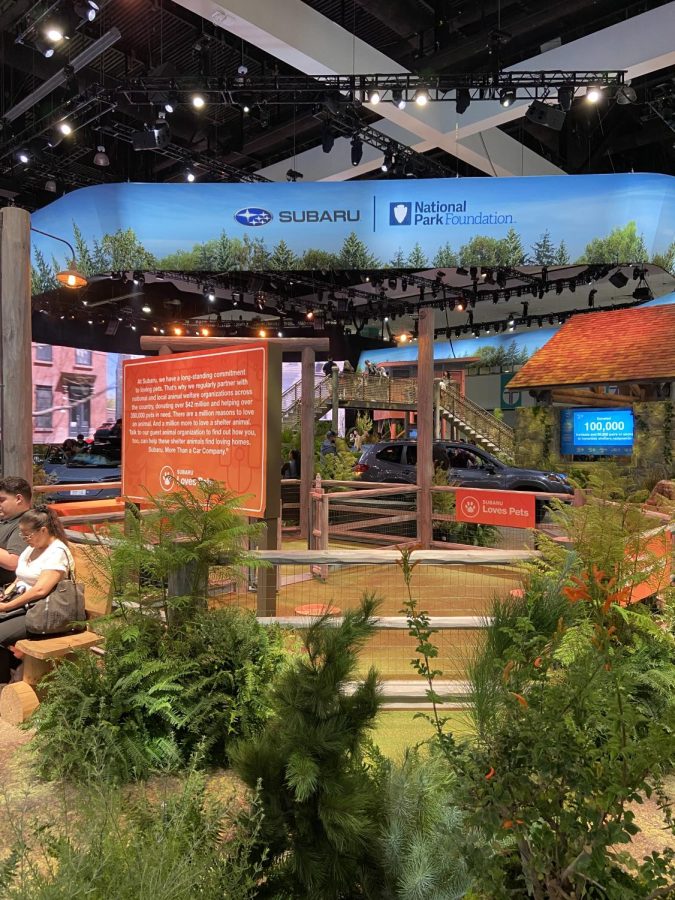
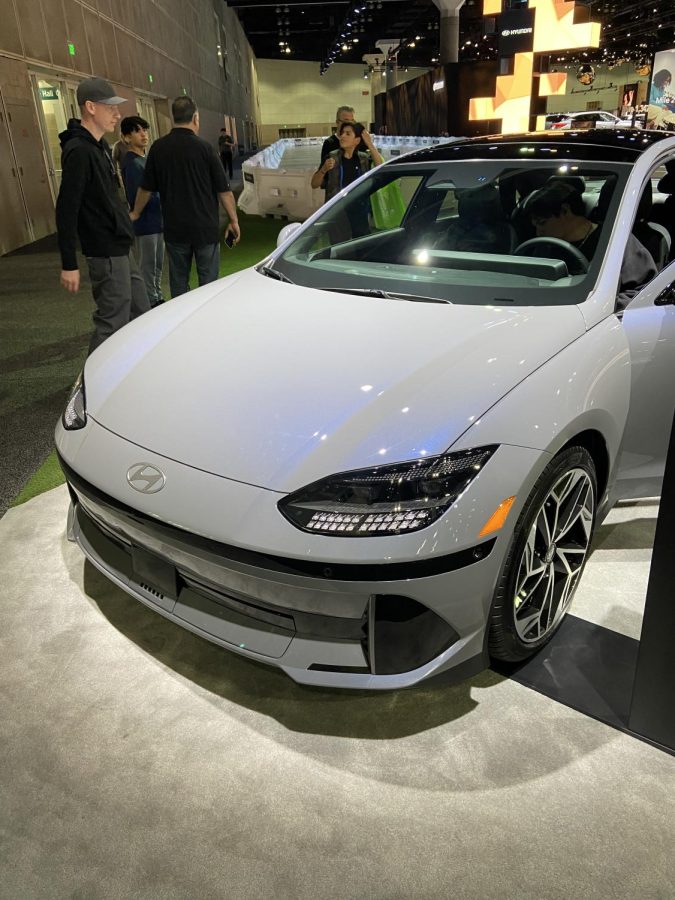
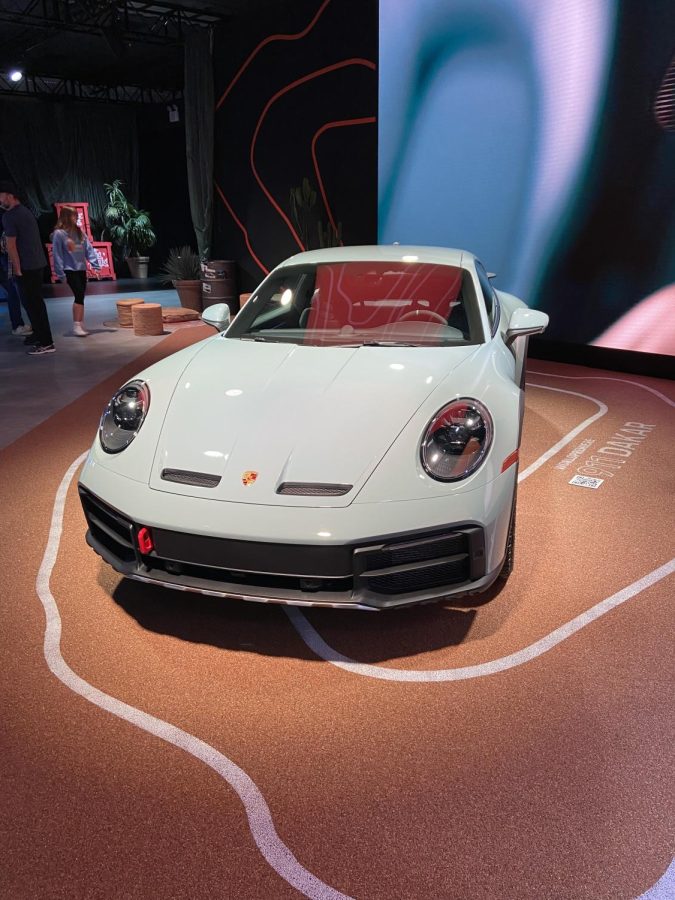
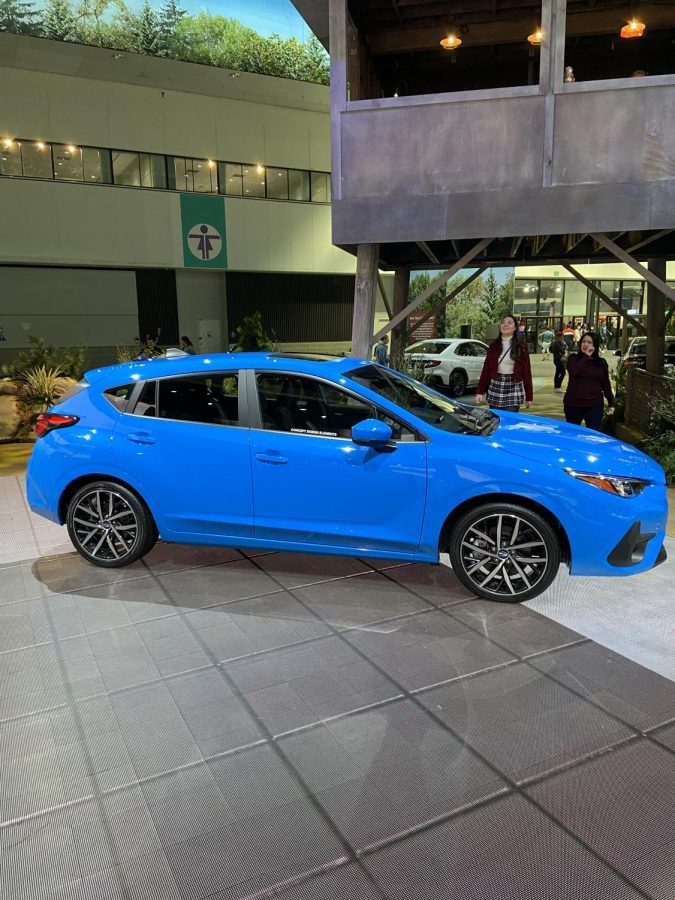
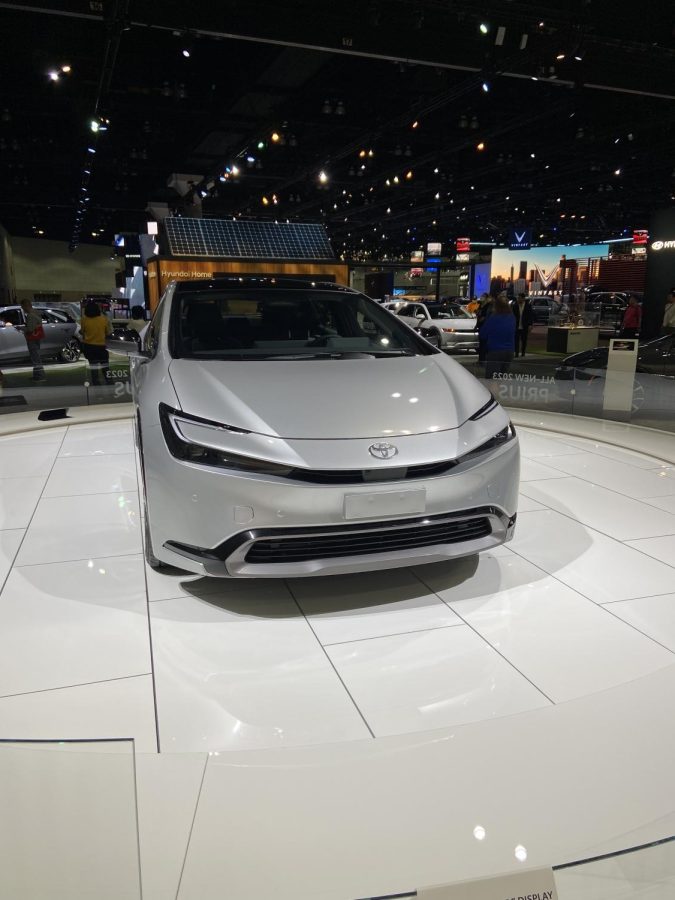



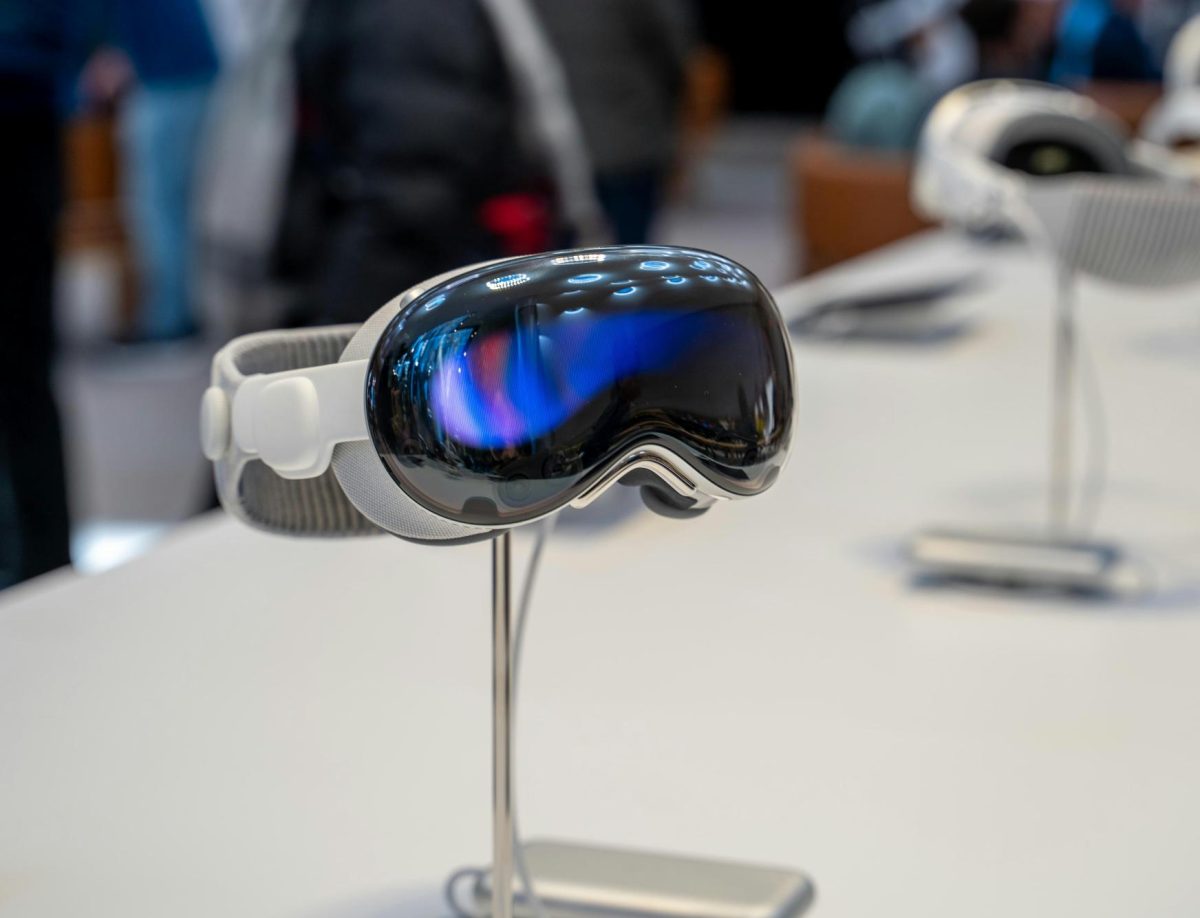






Alicia Tan • Dec 7, 2022 at 11:29 am
Photos are incredible! Also spectacular title 😀
Katie A. • Dec 6, 2022 at 4:12 pm
This is a really interesting article, and I love the photos! I think I like the Vinfast the best, although they are all cool-looking cars!